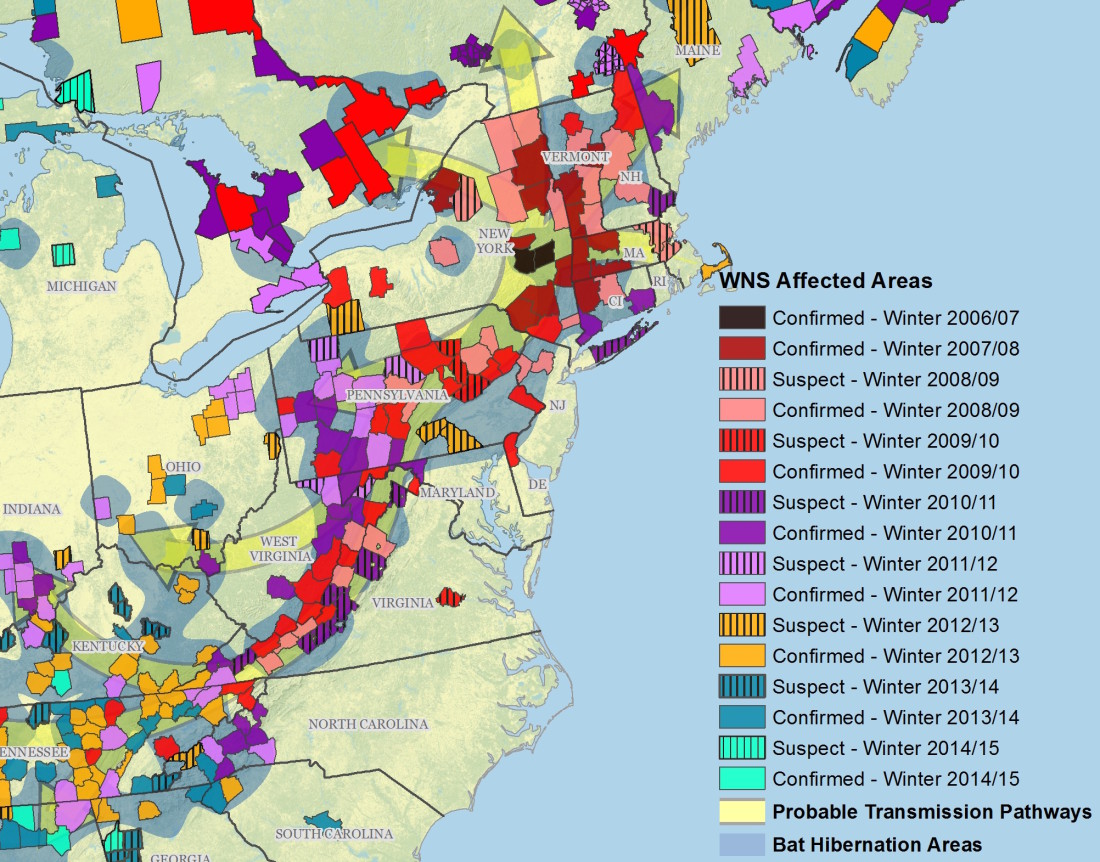[White nose syndrome] has killed at least 5.7 million bats since it arrived in North America in 2006. Some winter colonies have seen 100% fatality. The impact of this disease is unprecedented. Since bats are the primary predators of night-flying insects, we can expect to see significant ecosystem changes in the coming years. The little brown bat (Myotis lucifugus) was once the most common bat in North America; today, it is being considered for protection under the US Endangered Species Act.
—— from Bat Conservation International
There may now be a glimmer of hope for treating WNS, an ailment killing bats at alarming rate all up and down the Appalachian Mountains and now as far west as Oklahoma. A treatment developed and applied in Missouri over the past winter and spring has shown some preliminary results. Utilizing a bacteria to combat the fungus that thrives in the bats natural habitat of cool damp caves may be just what the bat doctor ordered.
From a Nature Conservancy article:
The 75 bats released [in May] were part of the first field trials of a novel way to protect bats from WNS, which is caused by a cold-loving fungus, Pseudogymnoascus destructans (Pd). Pd was introduced into the United States about ten years ago and has killed more than 5.7 million American bats in the eastern half of the U. S. and Canada.
Pd invades the nose, mouth and wings of bats during hibernation, when bats’ immune systems are largely shut down. Research indicates that the fungus may lead to dehydration, causing them to wake more frequently and burn precious fat reserves. This leads to starvation. Science has yet to develop an effective, ecologically appropriate means of combatting the fungus, which may kill up to 100 percent of bats in an infected cave, but the recent field trials are the most promising yet.
In 2012, Dr. Christopher Cornelison and several colleagues at Georgia State University found that a common North America bacterium, Rhodococcus rhodochrous, had the ability to inhibit the growth of some fungi. They found in the lab that R. rhodochrous, without directly touching the Pd, could nonetheless strongly inhibit its growth.
— read the rest through Nature Conservancy…




Before you comment
The comments section is here to provide a platform for civil dialogue on the issues we face together as a local community. Xpress is committed to offering this platform for all voices, but when the tone of the discussion gets nasty or strays off topic, we believe many people choose not to participate. Xpress editors are determined to moderate comments to ensure a constructive interchange is maintained. All comments judged not to be in keeping with the spirit of civil discourse will be removed and repeat violators will be banned. See here for our terms of service. Thank you for being part of this effort to promote respectful discussion.